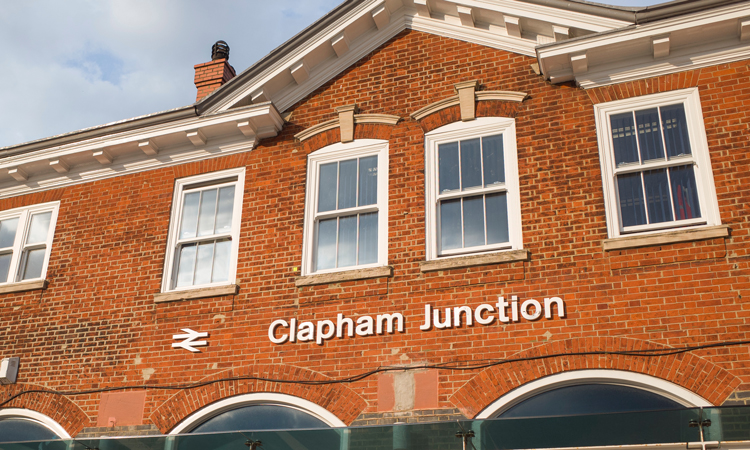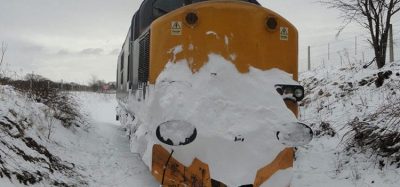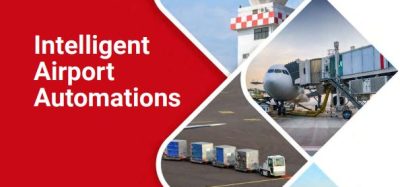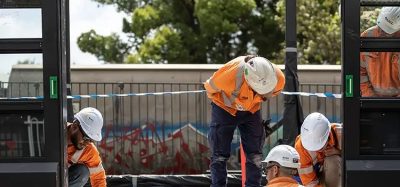Are lessons from Clapham Junction disaster ‘fading’ from the rail sector?
Posted: 11 January 2019 | David Porter | No comments yet
David Porter, Chair of the Institution of Occupational Safety and Health’s (IOSH) Railway Group, examines what was learned in the 1988 Clapham Junction rail crash and, following several incidents and near-misses in recent years, asks if those lessons have been forgotten.


Thirty years have passed since the Clapham train crash and anniversaries provoke reflection and re-evaluation. Essentially, did we learn anything, and did it stick?
Clapham was a tragedy and a hard lesson for many: The tragic loss of life and injury; the bereaved families; those involved in rescue, recovery and remedial work; as well as those on the British Railways Board whose behaviour was scrutinised as part of the investigation by Sir Anthony Hidden1.
The evidence showed a combination of management failures, leading to weak supervision, poor signalling wiring practice, an absence of wire counting, defective testing, inadequate communication of new procedures, lack of competent signal engineers and inadequate monitoring.
The causes included difficulty of recruitment, shortage of staff, fatigue from excessive hours, re-organisations, an inability to learn lessons from previous incidents, a lack of audit and pressure on timescales and, more tellingly, ‘the concern for safety was permitted to co-exist with working practices which…were positively dangerous’ (Hidden paragraph 17.3)1.
We should remember that much beneficial change came out of Clapham, such as the signalling design handbook and the signalling works testing standard which have contributed to the substantial improvements in safety performance that we have seen in the UK railways since the 1980s.
However, recent RAIB investigation reports2,3 of incidents at Cardiff and Waterloo have highlighted that there are parallels with the 1988 Clapham Junction accident that show some of the lessons learned are – worryingly – fading from the railway industry’s collective memory. There are certainly echoes in these events of the sincere intentions on safety not being delivered on the ground and that the current levels of safety performance may be attributable partly to good fortune as well as good management.
In acknowledging this evident concern I’ve been reflecting on what may be some of the underlying issues here. The Clapham investigation was a product of its time. It was pre-privatisation, pre-safety case regs, pre-ROGs, pre-health and safety management standards and safety management systems. At that time our thoughts about health and safety culture and human error were still embryonic. The lens through which we see, assess and judge now, is different.
Against current thinking, the circumstances revealed by the RAIB investigations, whilst concerning, reflect the constant challenge of achieving adequate safety in complex, high-hazard organisations. Lessons are never learned once; they are learned, relearned and reapplied to the constant changing circumstances faced by the organisation. The nature of adequate control of risk is recognised as a product of constant adaptation. The need to retain corporate memory, competence and motivation in a changing, ageing workforce is constant. As is the need to maintain the sense of importance, urgency and reality of the risks as those with a personal, emotional connection with tragedy retire.
To achieve this safety climate is not something in the gift of frontline workers, supervisors or middle managers. It is for leaders. For me, some of the key questions around the RAIB findings are the suitability of the culture and the capabilities of senior managers to create and sustain an appropriate positive safety culture. As the number of incidents declines, culture becomes even more important in sustaining improvement and success.
Have we got the railway culture right?
There is a recognition that a ‘just’ culture can contribute to learning before an adverse event. But how effective is it in practice? Is it easier now for someone to speak up about a safety concern and delay a job or possession?
Or is it still that no one is confident enough to step forward and hold up the work? Or does the ‘show must go on’ approach still predominate? (See Hidden report paragraph 16.36)1.
Also, does the approach acknowledge that fatigue, misjudgement and error is not unique to those at the sharp end of the business? Misdirection and misalignment at the top and the middle can just as easily sow the seeds of failure as can mistakes at the bottom. How do we apply a just culture to senior managers?
Have we also recognised the limits of a just culture? A just culture is very valuable but is it not essentially a ‘post-error’ remedy? The evidence from high reliability organisations (HROs) is that a just culture is only one part of several ways of thinking and behaving that contribute to prevention4. Have we learned enough from HROs and the ERA5?
With regard to senior manager capabilities, have we captured the essential skills and knowledge in culture building into the competence management system? Do these expectations include the ability to craft and oversee a meaningful strategy to continually improve safety culture as envisaged by the common safety methods on safety management systems?6 Has their development engendered a respect for the safety risks and the need to consider the risks to people, alongside the risks to the business? Has it countered the tendency to underweight the probability of rare, negative events?7
One of the positive pieces of advice within the Hidden report is in paragraph 13.11, where he comments that, for both humanitarian and commercial reasons, it’s necessary that ‘the concept of safety must be at the forefront of all thinking at all times’. My impression is that this cardinal point has been almost totally lost from the thinking of those with significant influence on the industry. Three recent examples come to mind:
- The December 2018 ORR consultation concerning the policy on ‘Holding Network Rail to Account’ does not acknowledge the potential for adverse impact on health and safety from increased attention on performance and economic incentives. It is also unclear how this approach has acted on the advice from Nick Chater on the crafting of performance incentives8. Perhaps the final policy will address these issues and lead to better alignment between the ORR economic and safety regulators.
- The final Glaister Inquiry report has confirmed that the funding and operation of the railways is a complex system that has a range of risks. In a complex system, where all facets are interrelated, these systemic risks need to be managed as a whole. Unfortunately, there is no acknowledgement in the report that the systemic risks extend to safety. Consequently, it is not clear how the proposals to remedy the ‘accountability gap’ over managing systemic risk will cater for the safety implications.
- The terms of reference of the Williams Rail Review seeking to explore the most appropriate organisational and commercial frameworks for the railways is silent on safety. Does not an optimal solution need to balance the objectives of performance, economy and safety?
As we approach the start of Control Period 6 (CP6), with greater devolution and discretion available to the routes, there is a lot for the industry as a whole to think about.
References:
- www.railwaysarchive.co.uk/documents/DoT_Hidden001.pdf
- https://assets.publishing.service.gov.uk/government/uploads/system/uploads/ attachment_data/file/665896/R152017_171030_Cardiff_East_Junction.pdf
- https://assets.publishing.service.gov.uk/media/5bf28782e5274a2aeeae93bb/ R192018_181119_Waterloo.pdf
- www.hse.gov.uk/research/rrpdf/rr899.pdf
- www.era.europa.eu/sites/default/files/activities/docs/europen_railway_sc_model_ attributes_en.pdf
- https://eur-lex.europa.eu/legal-content/EN/TXT/PDF/?uri=CELEX:32018R0762&from=EN (Paragraph 7.2.3.)
- http://orr.gov.uk/__data/assets/pdf_file/0010/39790/a-behavioural-economic-perspective-on-performance-incentives.pdf (Section 1, pages 3-5)
- http://orr.gov.uk/__data/assets/pdf_file/0010/39790/a-behavioural-economic-perspective-on-performance-incentives.pdf
Biography









